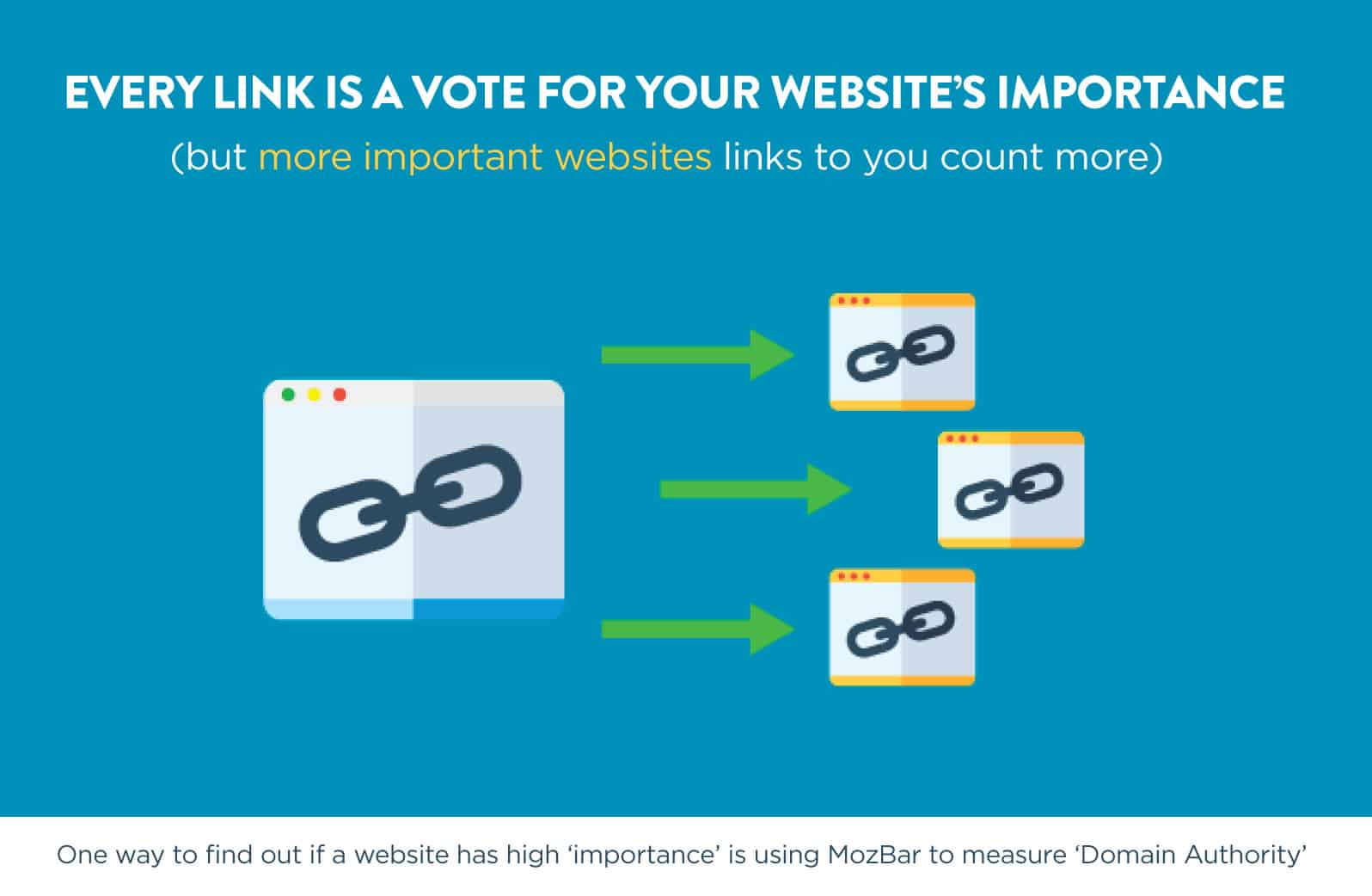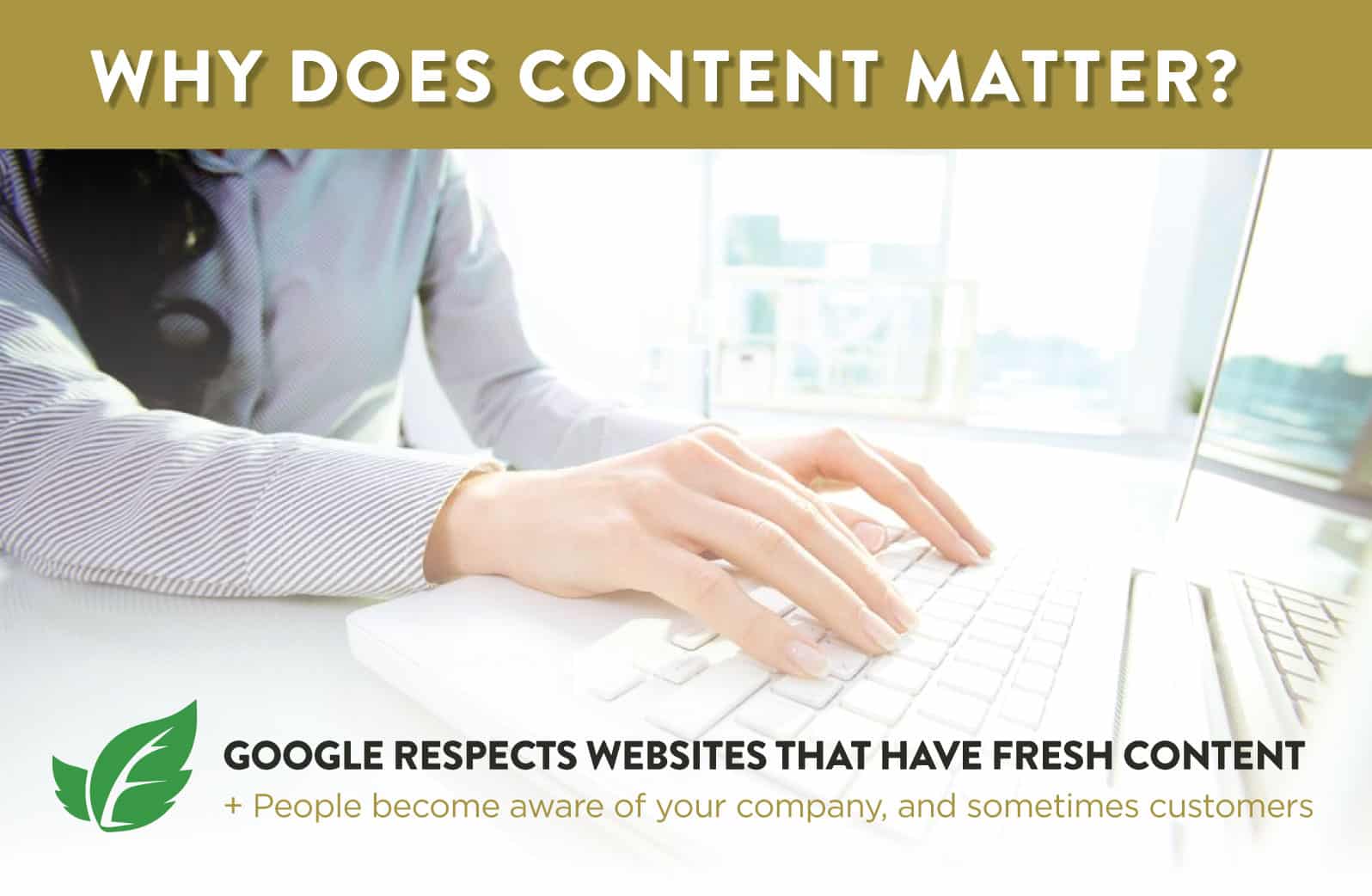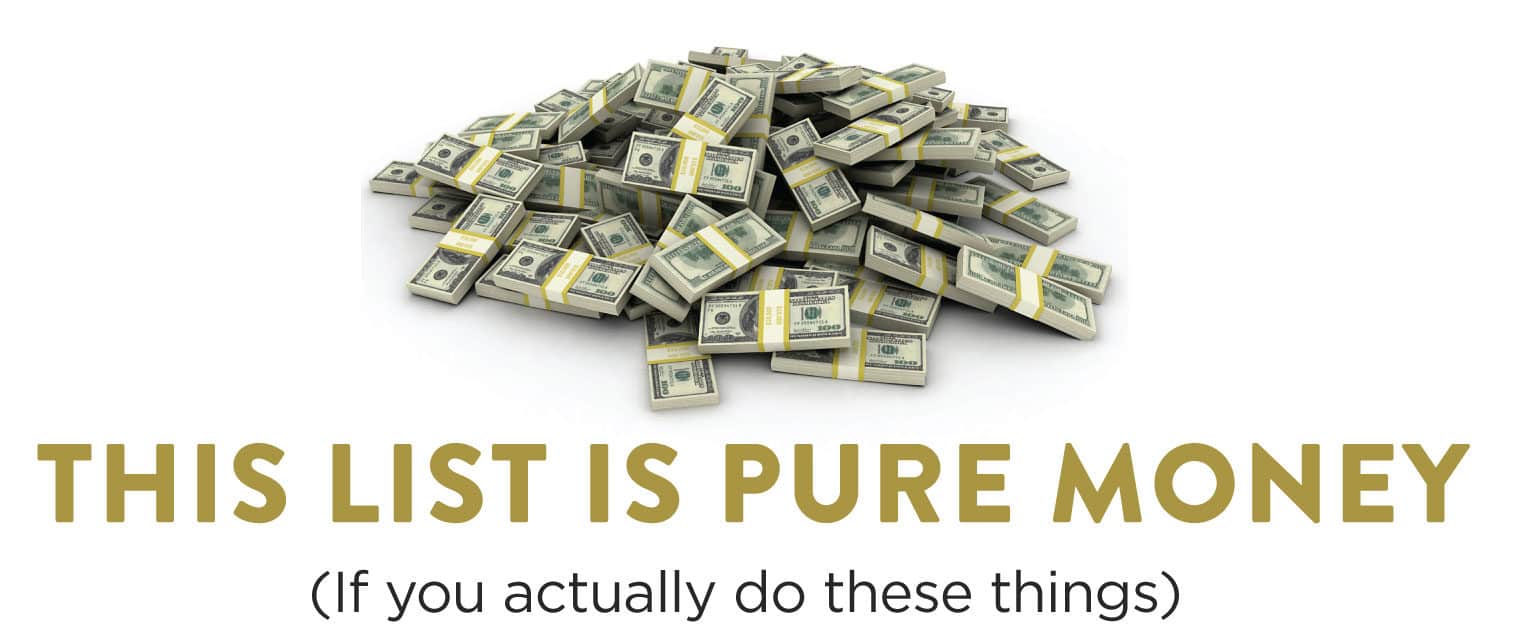SEO or Search Engine Optimization is the process of making your website easier to find on Google and other search engines – this article will cover the most important SEO Basics.
It’s super useful for small business owners – on up to enterprise corporations.
This guide is for the business owner or marketing manager who wants to get started. This guide will give you the dead-simple, clear next steps to get going, understanding key concepts, and what it will take to be effective at SEO long-term.

I understand that SEO is confusing to many people. Don’t worry – I’m going to make this simple!
Get the entire overview of the basics of SEO in this energetic video I just recorded – or continue reading below, for practical how-to next steps – literally giving away all of the secrets we’ve used to DOUBLE many clients traffic in less than a year.

SEO involves creating useful content, getting links back to your site, and technical aspects of your site.
Making websites more effective is our entire business – so we spend hundreds of hours a week on SEO, but you don’t likely have that time.
That’s why it’s important to boil it down to a couple of key activities if you want to get value out of the time you spend on SEO. Here are the three places we usually spend the most time (and then I’ll give you a few next steps on each and walk you through them.)

Three Biggest Keys to SEO
- Technical SEO: Make sure the site is crawlable, and thin and duplicate content is de-indexed, make sure you are using sub-headings, alt tags on images, and have submitted a sitemap to Google, etc.
- Getting Links from other websites back to yours: Find ways to get links on other sites – from local directories like Yelp and Angie’s List – to P.R. and sponsorships, scholarships and guest posts.
- Content Marketing: Find terms that your ideal customers are searching and write articles and landing pages on your site to attract their attention – and find ways to pivot their attention, tastefully, to work with you.
These are the three categories – but what actions would I suggest if you’re going to do NOTHING ELSE for your SEO whatsoever?
3 Key actions if you do nothing else
- Write Meta-titles and descriptions for your top 10 pages, and make sure those pages have 500 words or more.
- Submit your sitemap to Google with Google Search Console
- Do local directory listings – Use Yext.com or even Fiverr!

LINKS MATTER A LOT – 3 Easy Ways to Get Links Quick
- Local Directory Listings (as mentioned above) – could use Yext.com or Fiverr
- Press Release and Distribution – could use PressReleaseJet.com
- Paid directory listings on High ‘Domain Authority’ sites like Inc.com/verified and Ontoplist.com
Writing Your First SEO-Conscious Blog Post
Once you write your meta titles and descriptions – you will want to find a rhythm for putting out content on your website regularly. Whether that’s once a month or (more ideally) once a week.
Your first blog post shouldn’t be super hard – write about things you’re passionate about and that you know a lot about.
But the absolute ideal is writing about something you like writing about – AND – that people want to read.
Lastly – it should be something that a billion people haven’t already written – unless you’re going to top them significantly.

1. Do a little keyword research
- Google the term – look at the suggested searches while typing it in, and at the bottom of the search under ‘People also search’: What kind of articles are coming up? How could you combine positive aspects of each of the top five articles into something even more amazing?
- Go to Quora.com – and search out what questions people are asking related to your topic: how could you approach it from a different angle that some of the top ranking items on Google are not, to service these questions?
- Use a tool like SEMRush or Ahrefs to see what kind of ‘search volume’ there is for this term. Ideally – quite a few people are regularly searching the topic, so you’re article will get read!
2. Outline the post to SERVICE those ideal prospects that would search this topic
3. Make sure to catch their attention quick with an image and short, attention-grabbing sentences.
4. Go deep – answer everything a prospect could want on the subject.
This is just a start – but only to buy HIGH-QUALITY links is a crucial one. I can’t stress this enough – that SEO is increasingly more important for a company’s overall marketing efforts as people become more and more addicted to their smartphones and the ease and comfort of Googling from their couch.
Get a checklist sent to you – with all of the suggeted items above:

Content Strategy for SEO – The Basics
Why have a content strategy? Content matters because you want people coming back to your site, and fresh content helps do that. But it also indicates that your site is fresh and relevant to Google’s algorithm.
Content marketing is one of the fastest growing disciplines in marketing – and it all starts with keyword research, understanding the audience, and finding clever ways to pivot into calls-to-action (lead generation or e-commerce) while still engendering positive brand connotations with your ideal customer.
Keys to making your content marketing badass (while considering SEO Basics):
- Keyword Research: You could dedicate an entire book to keyword research. In fact, I’d go out on a limb and say my vote for the #1 most valuable discipline in all of marketing today is keyword research. For us – it starts with competitive analysis – what are your competitors ranking for that we could go after with landing pages and blog posts. Then we do keyword analysis – is there enough ‘search volume’ for the term, and if you ranked for it, would it actually draw in the right people on your site (actual ideal customers)? You can do this by using the Keyword Explorer on Ahrefs or similar, and of course your team’s creativity. When you get a list of keywords that are worth going after, it’s important to determine what kind of content would service ideal customers for those keywords and use your imagination to craft compelling, undeniably attractive titles. ‘Listicles’ like ‘7 Best Ways to Steal Your Competitors Best Keywords’ do great, but some might be ‘Location + Service’ landing pages, or in-depth how-to guides like this one but for your industry. The words ‘How to’ and numbers do great in titles, so do parentheses for some reason, and spicy attention-grabbing terms like ‘Boost,’ ‘Skyrocket,’ ‘Best’ and ‘Easy.’ Crank up the ‘stickiness’ of your title with humor and alliteration – or combine a couple of these for a mega-title.
- Understanding the Audience: is your brand serious (investing, etc.) silly (video games, marketing companies, and often restaurants), instructional (home and garden) – what do they want, what mood are they in when they’re ripe to appreciate your epic content? Getting into their heads is going to make you more apt to be able to answer their questions and give them what they need in your content. Generally – a little more down-to-earth language and empathetic tone while speaking as closely as possible to your IDEAL CUSTOMER will go a long way towards the right tone.
- Calls-to-action: Whether it be smack dab in the middle of your article – like our little ‘download this checklist’ a couple of sections before this one, at the end, or just in your site’s main navigation – CTAs should be a way of life. They should not, however, encompass the entire tone of your blog articles – if you sell for the whole article, very few people will read it, and most will dismiss it as a negative experience, which is not what we want. You can end the article with a few sentences about your offering – but generally content marketing is more about building a long-term beneficial relationship with your ideal customer and creating positive signals to Google that your website is full of quality content, not to bait and switch and get as many people to buy as quickly as possible.
- Breeding positive connotations of your brand: At the end of the day, we want people to enjoy one useful piece of content on your site – and when it’s time to make a decision on a purchase similar to what you sell, for your company to be one step closer in their mind to the type of company they would want to buy from. That’s it – and content marketing has been around a long time doing just that. Guinness’ Book of World Records and Michelin Star Restaurants were plays by Guinness Beer and Michelin Tires to engender positive vibes with their brands, and both played out quite well for them – even though those two examples the brand of the content grew to be it’ own thing – beyond the initial roots. If we think of our content marketing in this frame, and consider the long-term implications of creating powerful, useful, and entertaining content – we will win in the short-term too, with more people finding us on search engines.
- Finding a rhythm and schedule for content going out on your site: You don’t just want one piece of content every year – you want to figure out what’s a realistic goal for your team, or what you can afford to outsource. Ideally, we try to get people to blog at least four times a month when possible, because a weekly rhythm keeps it specific but still not too heavy. Then you need to get it in the calendar, get it on the checklist, and get it out of your head, with a specific time that it’s due. Whether you, someone on your team, or an outside marketing company is responsible.
- Making sure key people are responsible and accountable: It’s not enough to say ‘we’re going to blog once a week’ and have a ‘god-I-hope-we-do-it’ attitude. Someone needs to be assigned the work, and if you’re a single entrepreneur, it’s probably you. Whoever is responsible – let them know it’s part of their job responsibilities, and they’ll be judged on it, and put guard-rails in place to make it easier to remember!
Technical SEO Basics
Deeper definition and methodology of Technical SEO – Technical SEO is the process of making your website easier for Google to crawl. For big sites – they have a ‘crawl budget,’ so you have to optimize that by trimming out any thin or unnecessary content. Often sites have issues where the category pages and ‘tagged’ pages are creating all of these extra – duplicate content issues and destroying the ‘crawl budget.’
Your mission – is to figure out if there are duplicate or thin content issues and get rid of them. Beyond that making sure you have adequate page titles and meta descriptions, H1s, internal links, and are loading quickly. Sitemaps and Robots.txt help give Google’s algorithm a ‘cheat sheet’ on what the hierarchy and categorization of your site are – and a well ‘technically optimized’ site will have VERY GOOD hierarchy and intuitive categories – all of which bleeds into the ‘user experience.’ A site with good UX means people can navigate wherever they want to go without thinking too hard.

Important Aspects of Technical SEO
- SUPER IMPORTANT Page titles and meta-descriptions need to be compelling and keyword rich
- SUPER IMPORTANT De-index any thin content, or content categories using Yoast SEO, or similar tool and Sitemap.
- URLs – need to be short and descriptive
- Use canonical tags if the same content appears again – to point back to the original URL
- Use only one ‘Heading 1’ or ‘H1’ in your content per page
- Make sure images have ‘Alt text’ that describes the images
- Configure your sitemap (you can use a tool for this) and submit to Google
- Create Robots.txt
- Find any links that are down (404 pages) and redirect using a 301 Redirect. Only use a 302 redirect if you are working on a page and the redirect is temporary.
- Have an SSL Certificate to protect the site, and indicate trustworthiness to Google.
- Make sure your website is mobile friendly (ideally ‘mobile responsive’) – meaning the content fits any mobile device but uses the same content.
- Link internally and often

- Make sure your website loads quickly (less than 2 seconds.)

Link-building for SEO Basics
Deeper definition and methodology of Link-building – So many big-time ‘Beginner’s SEO Guides’ barely even touch on link-building, even though quality links to a site has been the #1 or #2 most important factor in SEO when polling SEO experts for the last five years. So what gives?
Building links are hard. For that reason many SEO strategists might only suggest building quality content and ‘if you build it – they will come.’
Wrong.
So wrong. I wrote on my website for 3-4 years, and wrote big, juicy in-depth content, but had only 250 visitors a day – and I wanted more. I found someone who specialized in link-building and paid him $300 to give me as much value as possible in one hour of his time. He told me you could buy links, and if you did it right – you could get higher rankings.
Now, this is when most ‘white hat SEOs’ would disavow the idea of link-building through paid means and walk out the door with their dignity in hand, while your traffic stagnates year over year unless you create the most epic content the world has ever seen.
Not me – dear readers, I actually care about you winning.
What I will say – is you have to be careful to only buy HIGH-QUALITY links – and that shouldn’t be your only strategy. First of all, people pay for ads on websites all the time, how is paying for a link any different than paying for a text ad?
You should only do this if you plan to keep them for a long time – and you should do your damnedest to get all of the other organic links you possibly can as well. If you go out and buy a bunch of links – and don’t do any of the other tactics I’ll describe, I don’t think you’ll win, but they can augment your other – more organic – efforts.
My site (to be clear) took three years to get to 250 pageviews a day and tripled that to average 750 a day after a year of hard-fought link-building. Some purchased, some through guest-posting and linking back to my site, press releases, local listings, and every scrappy link-building technique I could possibly employ.
Don’t be white hat. Don’t be black hat. Be pragmatic.
What works? More importantly – what works long-term? Find those strategies and employ 10x the effort or resources as your competitors and you’re going to be the most pragmatic, high-ranking, website in the niche. Period.

Ways to get more links:
- Local Directory Listings (from earlier)
- Distribute a press release (from earlier)
- Submit your site as a paid listing on Inc.com/verified and Ontoplist.com (from earlier).
- Guest post on websites that allow it and have decent traffic and high domain authority (check with Mozbar)
- Find relevant domains that have expired and create a resource on your site that services the people looking for that old site.
- Buy links on Hoth.com – for instance, Blitz (sidebar links) and their Guest post service are both respectable when used in moderation and balanced with the other organic strategies.
- Resurrect dead resources that are linked to on Wikipedia by searching on google: site:wikipedia.org “your keyword” + intext: “dead link,” and then using Archive.org to find the old resource and putting it on your site, then editing the Wikipedia page or having another trusted editor do it.
- Sign up to for a Forbes Council for around $1,600 a year – and write on Forbe’s site (each article you write will have an author link back to your site, but don’t use links within the articles or they get mad.)
- Find other resources that no longer exist around the web – then resurrect them, and outreach to all of the sites linking to them and letting them know the link is dead but ‘we have the resource on our site’ and giving them the link. You can use the tool ahrefs to find all of the pages linking to a particular page.
- Sign up for HARO free – (Help a Reporter Out) and try pitching the media for 30 days! I did this and put my heart into it, and got eight links from awesome websites out of it, which was close to 1/3rd of my pitches. Not only that, this bleeds from SEO into P.R.– occasionally meaning you might get in print, or have an interview (for one of our landed pitches, they sent out photographers! DOUBLE PRIZES.)
- Sponsor events where there’s a good amount of visibility, and ask for your logo and a link on the home page under sponsors.
- Run a $500 – $1,000 scholarship and promote it to schools around the country – and get .edu links back to your site.
How do you spot a good site to get a link from?
The way we do it is we spot sites with a decent ‘DA’ or Domain Authority – and then we look deeper at its metrics with a tool like Ahrefs.
Does it have good traffic?
Does it have good links going TO IT?
Does it relate closely to what your site is about?
If you answered “Yes” to all of these questions – it would be a great site to earn a link back.
If some of the answers are yes – experiment by getting a few links like the one you’re considering and see if your rankings improve after getting them. (The magic usually takes a couple of weeks to a couple months to occur.)
What’s the ideal text to link back to your site with?
What you really want is for your link profile to be natural.
The absolute ideal? That you wouldn’t even have to worry about link text because the links are just rolling in naturally.
Unfortunately, unless you’re Apple.com, you may not have that natural rolling linking in enough volume to give you a powerful rise.
So I’d say in a simple way – 20-30% branded, 10-20% naked URL, 10-15% Brand + Long Tail, 10-15% General variations of keyword focused anchor text, 10-15% random like ‘click here,’ ‘more,’ ‘this site,’ ‘read more,’ etc. 10-15% of no text or image link, and 1% should be the exact match keyword you’re trying to rank for.
That 1% should be your absolute best links though. Your Forbes.com, your Entrepeneur.com, your SuccessMagazine.com links if possible – or your High DA homepage, and quality guest post links on real sites – if those are the ones that are the exact keyword you’re trying to rank for, they’ll be even more powerful.
That about wraps up the ‘Introduction to SEO’ from my perspective.
There are tons of ways to improve your SEO on your site, and these are a few of the pillar items in my experience. I use industry polls and research to guide my experimentation, and experimentation to guide my recommendations – so all of these suggestions have driven traffic and created leads and sales for numerous clients before I shared them.
This list of recommendations is quite literally – money.
Don’t be an idiot and not do these things – leaving cash on the table, while your competitor dives in his coins like Scrooge McDuck.
Looking a savvy SEO team? SEO niches we serve: Roofing, Plumbing, HVAC, Law Firm, Financial Services, Construction, Medical. Some cities where we serve clients: Chicago, New York, Omaha, Detroit, Dallas, Cincinnati.
Commonly Asked Questions About SEO Basics
How do you do SEO for a website?
1. Find relevant keywords with good search traffic potential. 2. Create and optimize pages for search engines and users alike. 3. Make sure your website is accessible to both bots and humans. 4. Build relevant links from other high-quality websites. 5. Track your SEO success by using tools like Google Analytics, Google Search Console, and Ahrefs or SEMRush.
How can I do SEO for free?
Most SEO basics techniques are free – in fact, if you’re on WordPress even buying the premium version of popular SEO tool Yoast SEO is probably not going to help that much. You really just need to buckle down, write relevant and useful content for your key services, create in-depth resources and write your meta titles and descriptions in a targeted way. Use Google’s keyword planner, then graduate to SEMRush or Ahrefs when you’ve done every free method above.
Is SEO easy to learn?
The basics of SEO are super easy to learn – this guide will get you started. Do everything here to a T, and you’ll experience massive benefits, which will likely spur you on to spend more time on SEO once it makes you money. The problem with SEO is not how hard it is – the problem is that it takes time, and mastering it takes A LOT of time.
What’s the benefit of using an SEO company?
Just like doing what you do – if you’re a business owner or a marketing manager, becoming an SEO expert can take upwards of 10,000 hours. Advanced SEO techniques include ‘anchor text ratios’ or finding out the ideal ratio of what other sites should be linking to you, schema markup to give Google clear delineation of what’s on your page, and becoming a master of balancing on-page SEO and targeted content that matches the searcher intent. These are things that Hook Agency has a handle on, and is constantly leveling up on. That’s why many smart business owners like you trust SEO companies with a strong reputation like Hook. Whatever you choose – make sure to check their reviews on Google and around the web, and look at their case studies for evidence of effectiveness, ideally in your industry.















